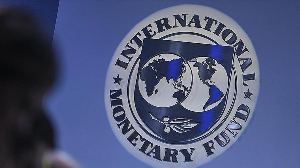…Was it a wise decision?
NEXT Monday, Oct.29, 2007 will be two years since Ghana International Airline (GIA) took to the skies as the National Carrier.With only two years in operation, GIA has incured $24 million debt, with an unspecified amounts sunk into its operations by the government.
GIA’s operations, can not be said to be the best as it has of late been characterized by delays and outright flight cancellations which were not communicated to passengers in good time resulting in chaos either at the Kotoka International Airport or Gatwick, London.
It is in this light that “The Ghana Palaver” is taking a look at the Ghana Airways and its successor the Ghana International Airline (GIA) in the last two years.
At the time of its demise, Ghana Airways had a debt of $160 million but had a lot of landed properties spanning across Africa and Europe. It also had its own planes, 3DC10 and 3 DC 9 aircrafts.
The routes an airline has, are very important and there is no doubt that Ghana Airways had numerous lucrative routes which were the envy of many airlines. The former national carrier had London’s Heathrow Airport as its number one route. It also had as part of its European routes, Dusseldorf and Hamburg in Germany and Rome in Italy. For the American route, Ghana Airways had JFK and Baltimore . It had also concluded plans to operate far deeper into USA by adding Atlanta, Georgia to the American routes and also was to add Toronto in Canada.
With Ghana’s history of being the first black African nation, south of the Sahara to gain independence, Ghana Airways was seen in many countries as an African Airline by those countries that did not have their own National Carriers. And so in the West African sub region, Ghana Airways was very dominant in Lome, Coutonou, Lagos, Abidjan, Freetown, Conakry, Monrovia, Banjul, Dakar, Ouagadougou and Bamako and until its demise, was the joy of a lot of passengers in Harare and Johannesburg in Southern Africa. It also had Arab routes, namely Dubai and Beirut.
Ghana Airways had well trained human resources who were rated very high in airline circles and they included the current Ghana International Airline (GIA) Chief Executive Officer ( CEO), Capt (rtd) Joe Boachie, who was alsothe former Director-General of the Ghana Civil Aviation Authority (GCAA). He was once a Ghana Airways pilot and retired as a Captain.
The current GIA Acting Head of Flight Operations and chief pilot, Capt. Mills-Lamptey and the Head of Certifications, Capt. Collins Fosu were all Ghana Airways Captains on the DC 10 aircrafts. The GIA Ticketing and Reservations Unit is also manned by former Ghana Airways personnel well versed in their field.
Cabin Service Supervisors of GIA, are pure bred, former Ghana Airways Cabin Crew. As enumerated above, if all these experienced human resource were with Ghana Airways at the peak of the crisis, why didn’t the NPP Government opt for restructuring instead of the outright liquidation?
In the heat of the Ghana Airways crisis, the government of John Agyekum Kufuor promised Ghanaians to deliver a national carrier not later than 29th October, 2007, which is next Monday, two years since GIA took to the skies, flying a leased 160 seater Boeing 757 from Ryan International Airlines, USA at $1.5 million monthly.
As we celebrate two years of GIA, can Ghanaians say they have a full fledged National Airline operating on an Air Operators License? Currently, GIA is not even registered in Ghana as an Airline, what GIA has is Operator’s Licence which is a temporary dispensation and has within one year to be issued with an Air Operator’s Certificate (AOC) for which GIA has been unable to meet the requirements by having her own pilots and cabin crew. As it celebrates it’s second year of operation, GIA’s current debt stock is in excess of $24 million and it is believed if the debt portfolio continues to rise at the current rate, in 15 years time, GIA would have exceeded Ghana Airway’s $160 million mark in excess of $180 million.
So the question “The Ghana Palaver” would like to ask is; if after 40 years in operation and with all its assets, Ghana Airways was saddled with a debt of $160 million and the GIA, with no assets, within 2 years also has $24 million debt, then what has changed? What makes the GIA a better option than Ghana Airways? By its current status, GIA flies leased aircrafts not registered in Ghana and with foreign pilots on behalf of GIA.
The GIA’s Air Operator’s Licence is a temporary dispensation and an airline taking advantage of such privilege is required to have under gone certification within a year and be issued with an Air Operator’s Certificte (AOC) which entails the airline in question acquiring its own aircraft registered in its country of nationality i.e. Ghana in the case of GIA with its own pilots and cabin crew.
As of now GIA has no aircraft of its own, it is alleged that the International Air Transport Association (IATA) is through the GCAA mounting pressure on GIA to acquire an AOC or be blacklisted and grounded. GIA, two years in operation, finds itself in a very precarious situation because the 230 seater Boeing 767 leased from Iceland air, registered in Iceland as TF-LLA and painted in Ghanaian colours, has been sold to Virgin Nigeria and has since been delivered to them.
Again, “The Ghana Palaver” would like to question NPP administration’s level of business expertise in the Airline industry and also ask why they chose to trade off a well established and structured Ghana Airways with all its aircrafts, routes and landed property for GIA that has nothing and operates from very expensive rented premises, and leases planes in excess of $1 M/month. Currently, the government has sunk into GIA operations an unspecified amounts of money.
And so, as we remember the crucifixion of Ghana Airways and celebrate GIA’s second anniversary, can we agree with the adage that “Give a dog a bad name and hang it” was the principle behind the liquidation of Ghana Airways?
















